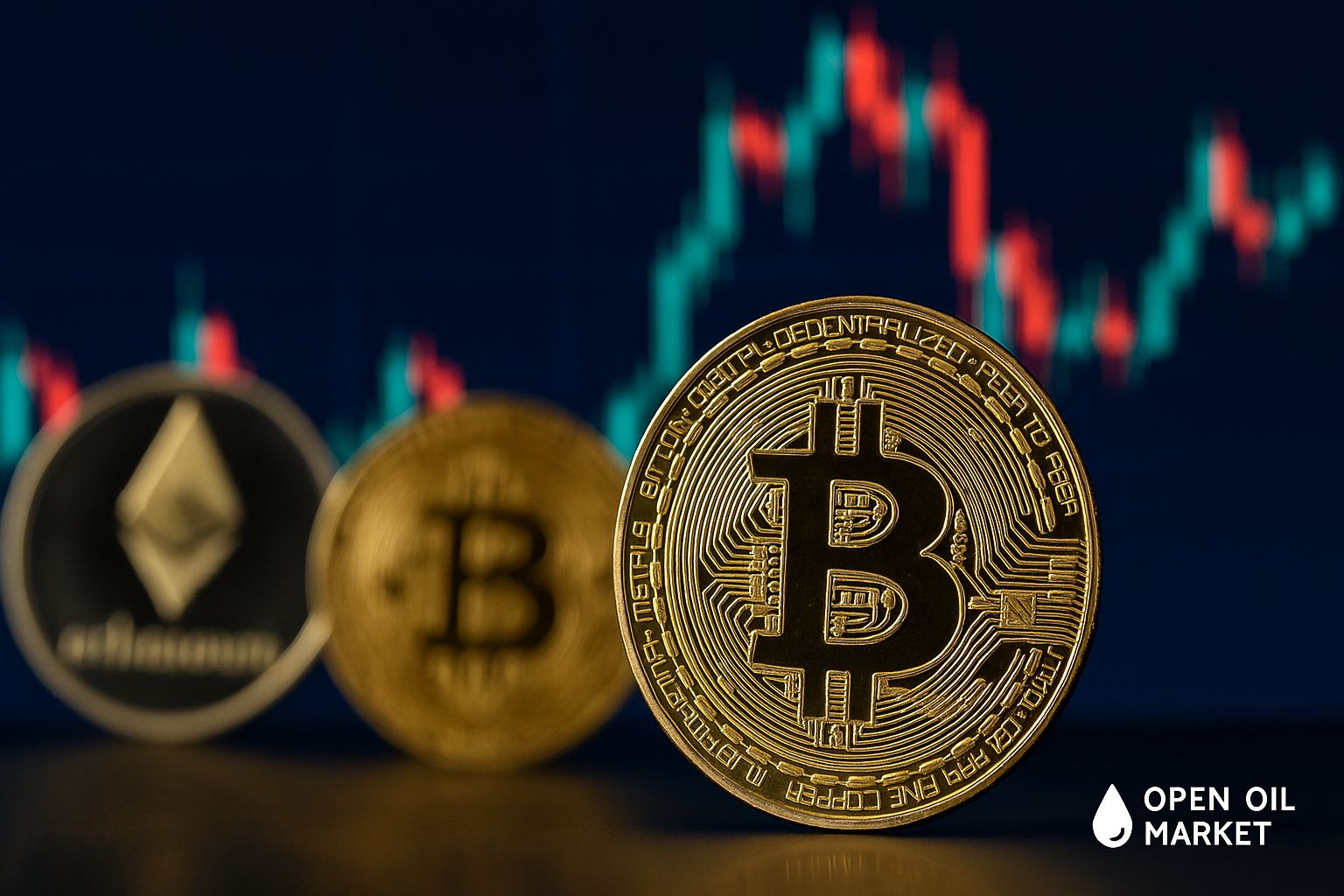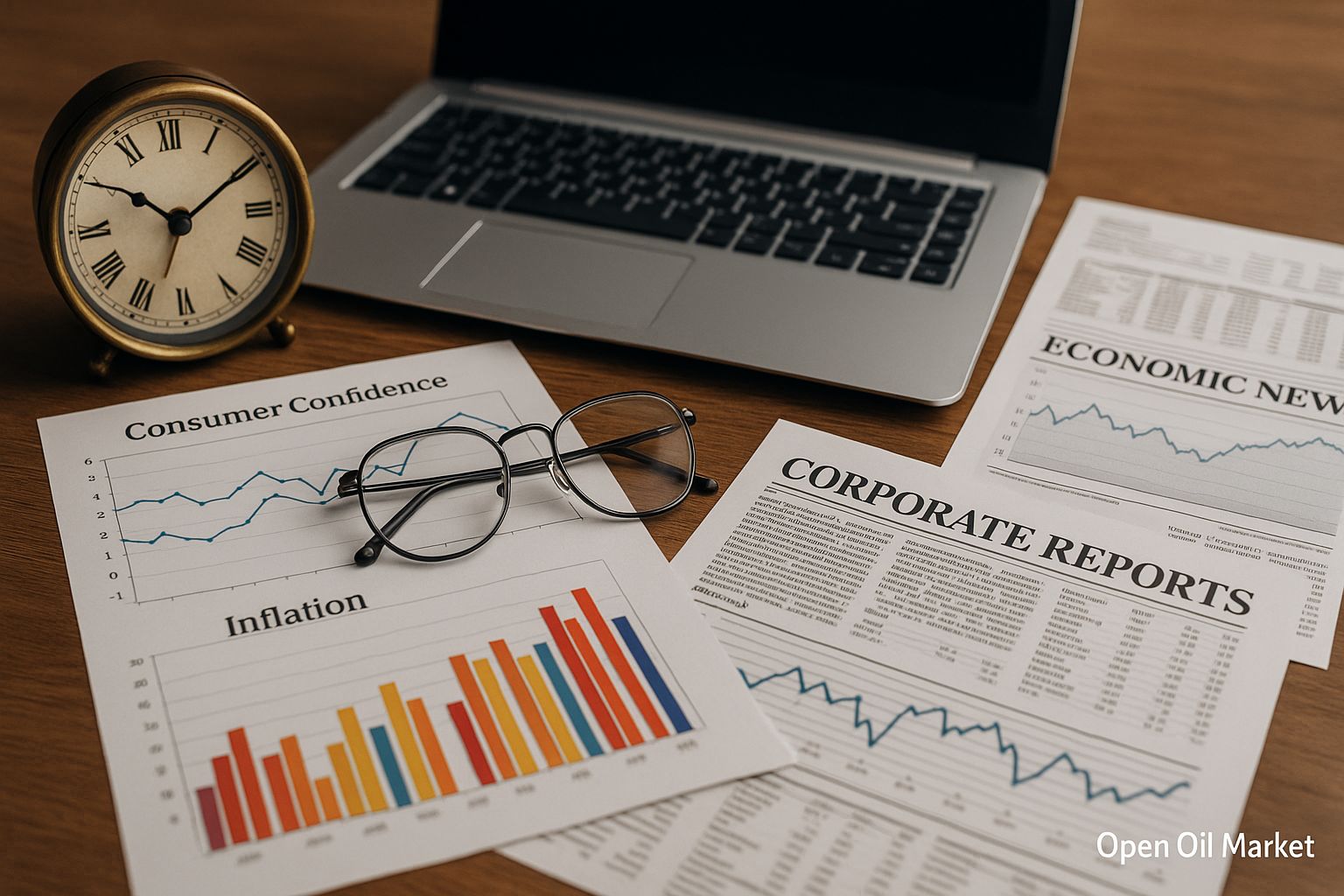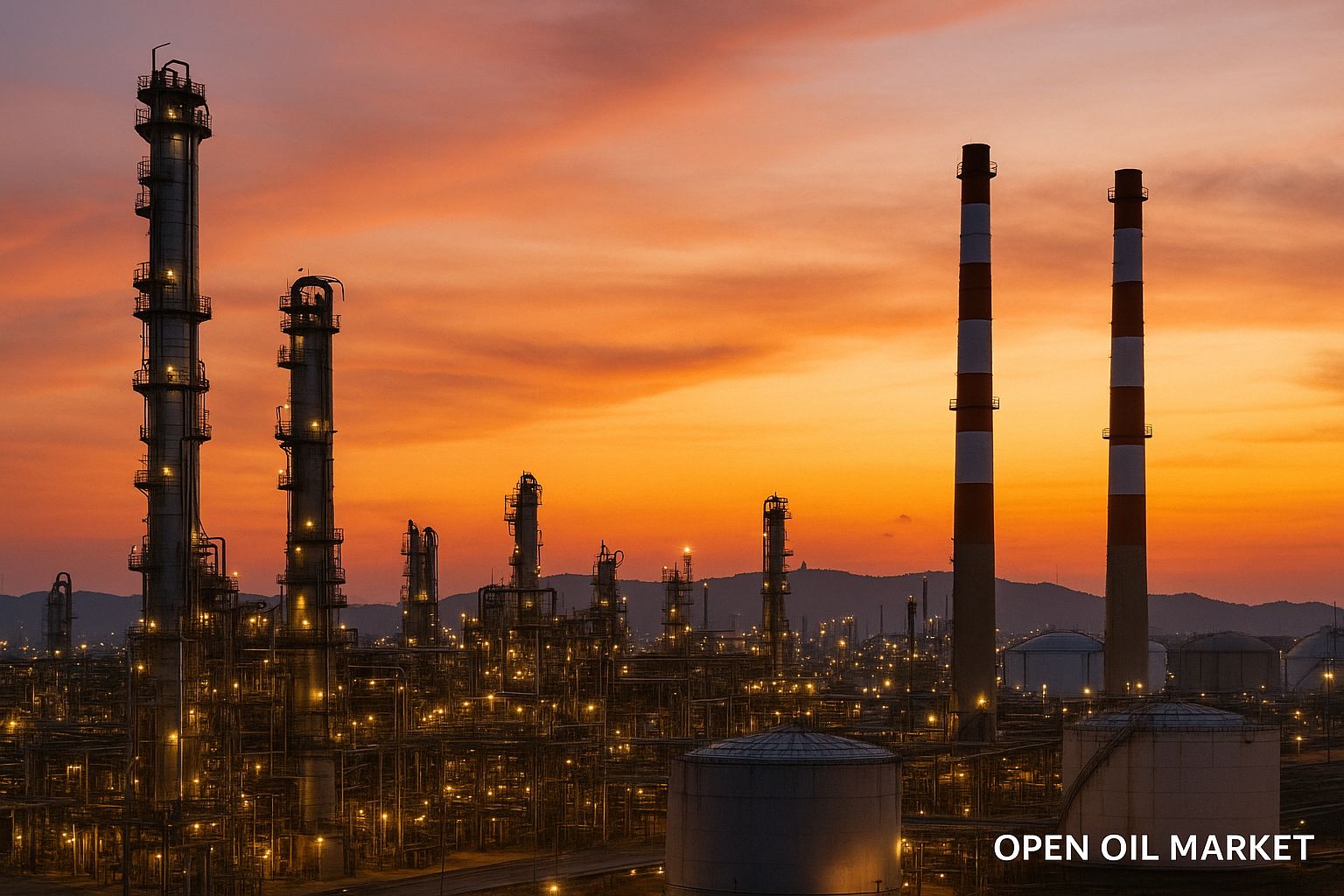Current News in the Oil and Gas Sector and Energy as of November 26, 2025: Oil, Gas, Renewable Energy, Energy Policy, Sanctions, Fuel and Energy Complex, Global Commodity Markets, Analytics and Key Events of the Day.
Global Oil Market
Following a recent sell-off, oil prices remain at their lowest levels in recent months. Brent crude is trading around $62–63 per barrel, while WTI is approximately $58. The market is under pressure from a combination of factors: a significant increase in oil inventories in the U.S., cautious demand forecasts from the IEA and EIA, as well as geopolitical signals. Renewed discussions regarding a peaceful resolution to the conflict in Ukraine have alleviated concerns about supply disruptions, further pulling prices down.
- Inventories and Demand: According to the U.S. Department of Energy, commercial oil inventories in the country increased by 6.4 million barrels over the week—significantly more than expected. Analysts note a risk of market oversupply: the IEA estimates that by 2026, global oil supply may exceed demand by approximately 4 million barrels per day, posing a substantial risk of surplus.
- OPEC+ Decision: In early November, OPEC+ countries agreed to a minor increase in production—of 137,000 barrels per day in December—deciding to abstain from further quota increases in the first quarter of 2026 due to concerns over excess supply. Simultaneously, new Western sanctions complicate the growth of Russian production: restrictions by the U.S. and the UK have primarily affected "Rosneft" and "LUKOIL," hindering investments.
Sanctions and Russian Oil Exports
As of November 21, U.S. sanctions against major Russian oil companies have come into effect. These measures, aimed at "Rosneft" and "LUKOIL," could theoretically remove up to 48 million barrels of Russian oil from the global market. Russian export flows are already facing disruptions: several tankers carrying Urals, ESPO, and other grades have been redirected or delayed. Indian refineries have started chartering tankers for crude oil shipments from the Persian Gulf to replace Russian volumes.
Meanwhile, financial institutions in Asia are exploring ways to bypass restrictions. According to sources, Indian banks have developed a special payment mechanism allowing for the purchase of Russian oil in alternative currencies—UAE dirhams and Chinese yuan—provided that sellers are not under sanctions. Previously, some Indian processors suspended purchases temporarily; however, the increase in discounts for Urals to approximately $7 per barrel has prompted them to resume imports on new terms. The largest Indian refinery, Indian Oil, has already stated that it will continue to purchase raw materials from Russia from companies not affected by sanctions.
- Price Consequences: So far, the pressure from sanctions has led to Russian oil being sold at record discounts, stimulating demand from Asian refineries for Urals grade. However, as of January 16, the European Union's full ban on importing oil products produced from Russian oil will come into effect (the ICE exchange will stop accepting "Russian" diesel and gasoline for delivery). This is expected to create a shortage in the fuel market and support high margins for alternative supply providers.
Diesel Market and Oil Products
The oil products market remains tense: diesel fuel prices are being maintained at elevated levels. Over the past week, diesel quotes have dipped slightly but remain about 8% higher than at the end of October. The main reason for this is the global diesel shortage. Russia, the second-largest exporter of diesel fuel in the world, has reduced supplies to record low levels amid sanctions and attacks on refineries. In October, Russian diesel exports fell to approximately 669,000 barrels per day—the lowest since 2020. Previously, "Rosneft" and "LUKOIL" together supplied around 270,000 barrels of diesel per day (about 37% of Russian exports and 9% of global exports), and these volumes have now essentially dropped from the supply.
European and Asian refineries, that previously relied on cheap Russian crude, are forced to restructure supply chains and decrease purchases from Russia. Consequently, the diesel refining margin has significantly increased. U.S. refineries have ramped up diesel exports to Europe, boosting profits from each barrel by approximately 12%. Even if geopolitical tensions begin to ease, it is unlikely that the EU will quickly lift restrictions on Russian energy resources—thus, the diesel shortage and high fuel costs will persist.
European Gas Market
Natural gas prices in Europe have continued to decline, reaching multi-year lows. On November 24, gas prices at the TTF hub for December delivery dropped below €30 per MWh (≈$355 per 1000 m³)—the first time since May 2024. Pressure on the market came from optimism regarding a potential peace plan for Ukraine. Market participants suggest that in the case of progress in peace initiatives, the EU may soften its approach to purchasing Russian LNG by removing part of the "risk premium" from prices. It should be noted that prior to the conflict, Russia accounted for up to 45% of the EU's gas imports; this share has now decreased to around 10%. Although Brussels has officially aimed to completely halt gas imports from Russia by the end of 2027, several countries (Hungary, Slovakia) challenge these strict deadlines.
- Inventories and Demand: Despite the low prices, Europe is experiencing record withdrawal rates from underground gas storage facilities. According to Gas Infrastructure Europe, from November 19–21, European countries have withdrawn unprecedented volumes of gas from storage facilities daily. By November 21, the storage level had fallen below 80%—one of the lowest figures for this date in the last decade. In the event of prolonged cold periods, current inventory levels may not suffice to meet stable demand from residential and industrial consumers.
LNG (Liquefied Natural Gas)
- Imports from the U.S.: In 2025, the European Union set a new record for purchasing American energy sources—approximately $200 billion, including liquefied natural gas, oil, and nuclear fuel. The share of the U.S. in Europe's LNG imports has risen to 60%. Brussels is actively signing long-term contracts for the supply of American LNG, further reducing dependence on other sources.
- Projects and Risks: New challenges are emerging in the global LNG market. In Australia, trade unions for LNG sector workers have initiated a strike at the under-construction Pluto expansion facility (operated by Woodside Energy), demanding wage parity with a similar project at Wheatstone. If the strike occurs, the launch of the additional LNG export capacity will be delayed for at least the end of 2026. Such disruptions heighten tension in the gas market: in 2023, strikes at Australian export terminals already caused price spikes due to redirection of supply flows.
Energy Partnership Between Russia and China
The VII Russian-Chinese Energy Business Forum has commenced in Beijing, marking a new stage of cooperation between the two countries in the fuel and energy complex. Chinese President Xi Jinping, in a welcome message addressed to forum participants, expressed his readiness to deepen comprehensive energy partnership, emphasizing the contribution of bilateral cooperation to the stability of global energy chains. The Russian side noted China's impressive achievements: Igor Sechin, head of "Rosneft," referred to China as the only remaining "industrial superpower" in the world and a great energy power. According to him, China is shaping a new landscape of global energy by combining traditional and alternative energy sources.
Examples of Chinese leadership in the industry are impressive. China's electricity generation now exceeds that of the U.S. by more than twice (two decades ago, the reverse was true). China accounts for about one-third of all global energy investments—expected to reach $900 billion in 2025, which is 30% more than the total investments in North America and 1.5 times more than in Europe. Rapid electrification and technological development have placed China at the forefront of global energy consumption. To meet its growing energy needs, Beijing is particularly focusing on energy security and infrastructure issues.
Progress in the gas sector has been a practical step towards enhancing cooperation. "Gazprom" and the Chinese CNPC have begun jointly constructing a cross-border section of the pipeline along the "Far Eastern" route—across the Ussuri River at the border between the two countries. This project, implemented under a 2023 agreement, will supply China with up to 12 billion cubic meters of gas annually (after a recent increase from the initial planned volume of 10 billion). A 25-kilometer branch from the "Sakhalin – Khabarovsk – Vladivostok" pipeline, equipped with a gas drying unit and measuring station near Dalnerechensk, will be constructed for this purpose. The start of export deliveries through the new pipeline is expected by the end of January 2027, which will strengthen the position of Russian gas in the Asian market.
Energy Policy and Renewable Sources
- COP30 (UN): At the UN climate summit COP30 in Brazil, participating countries failed to agree on a prompt phasing out of fossil fuels. The final declaration omitted a provision for the gradual cessation of oil, gas, and coal use, which means that there is no longer an official commitment to abandon these types of fuels. This wording became a compromise between states insisting on a smooth transition to clean energy and major hydrocarbon exporters defending their economic interests.
- G20 Declaration: Leaders of the "Group of Twenty" at the summit in Johannesburg placed particular emphasis on energy security. In a joint statement, they highlighted the necessity of stable supply chains for fossil fuels and indicated that sanctions risks for the energy market should be considered. At the same time, G20 countries reaffirmed their commitment to climate goals: the document outlines the aim to triple total renewable energy capacity and double energy efficiency in the global economy by 2030.
- Renewable Energy Projects: Despite political disagreements, "green" energy projects continue to be implemented in various countries. In Germany, the company Statkraft has commissioned the largest hybrid power plant in the country, combining 46.4 MW of solar panels and a 57 MWh battery storage. This facility is capable of providing electricity to around 14,000 households, reducing CO₂ emissions by approximately 32,000 tons per year. In India, the company ReNew Power has attracted $331 million from the Asian Development Bank for the construction of a hybrid energy complex with a capacity of 2.8 GW (solar and wind stations with a storage unit), capable of delivering 300 MW of stable "green" power 24/7. Such projects simultaneously enhance the reliability of energy systems and promote the global energy transition.
Major Deals and Investments
- Saudi Aramco: The state oil company of Saudi Arabia plans one of the largest deals in its history—the sale of stakes in export terminals and oil storage facilities. This operation is expected to attract over $10 billion, which will be directed towards the development of production, including the large-scale gas project "Jafura." Concurrently, Aramco continues its active investment program to expand oil and gas production capacities, adhering to a strategy of increasing its market presence.
Overall, by the end of November 2025, global energy markets remain in a state of unstable equilibrium influenced by contrasting factors. On one hand, progress in peace negotiations and enhanced international cooperation (e.g., deepening the partnership between Russia and China) is reducing the geopolitical premium in prices and alleviating disruption risks. On the other hand, sanction barriers and structural problems in specific segments (especially in diesel fuel and gas markets) continue to uphold local shortages and high volatility. It is crucial for participants in the fuel and energy complex to closely monitor diplomatic initiatives, regulatory decisions, and major investment projects—as these will determine the further dynamics of supply, demand, and prices in the sector.




